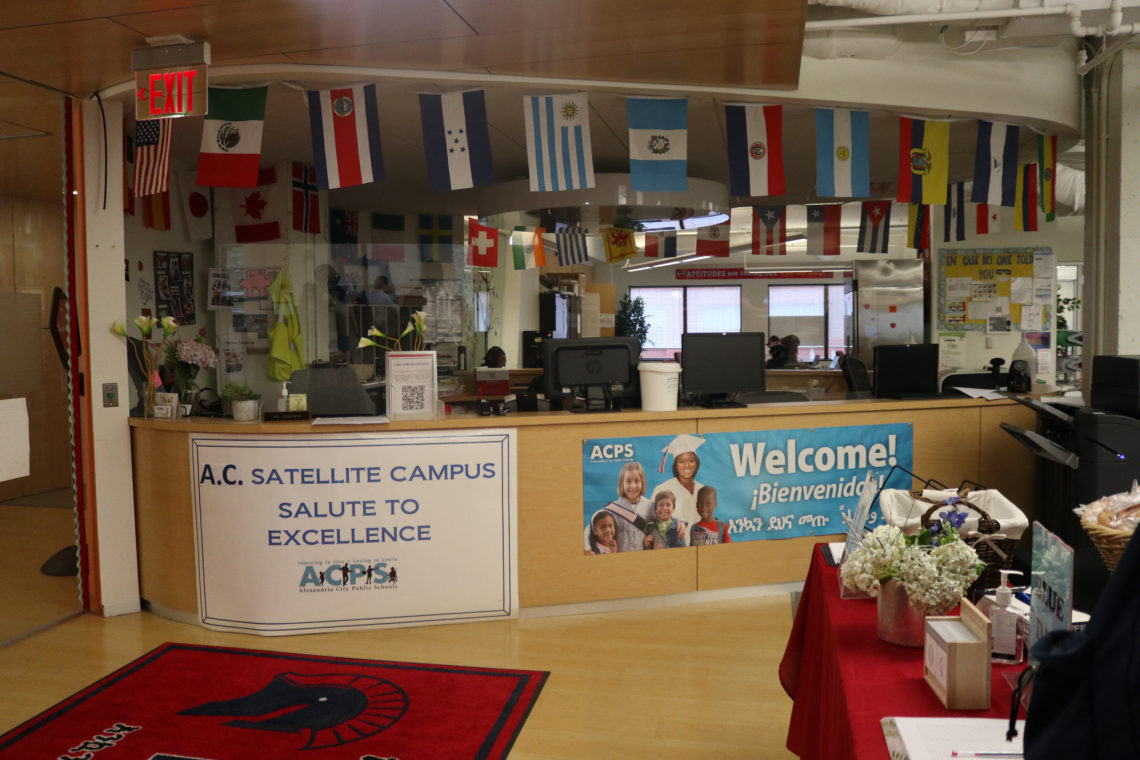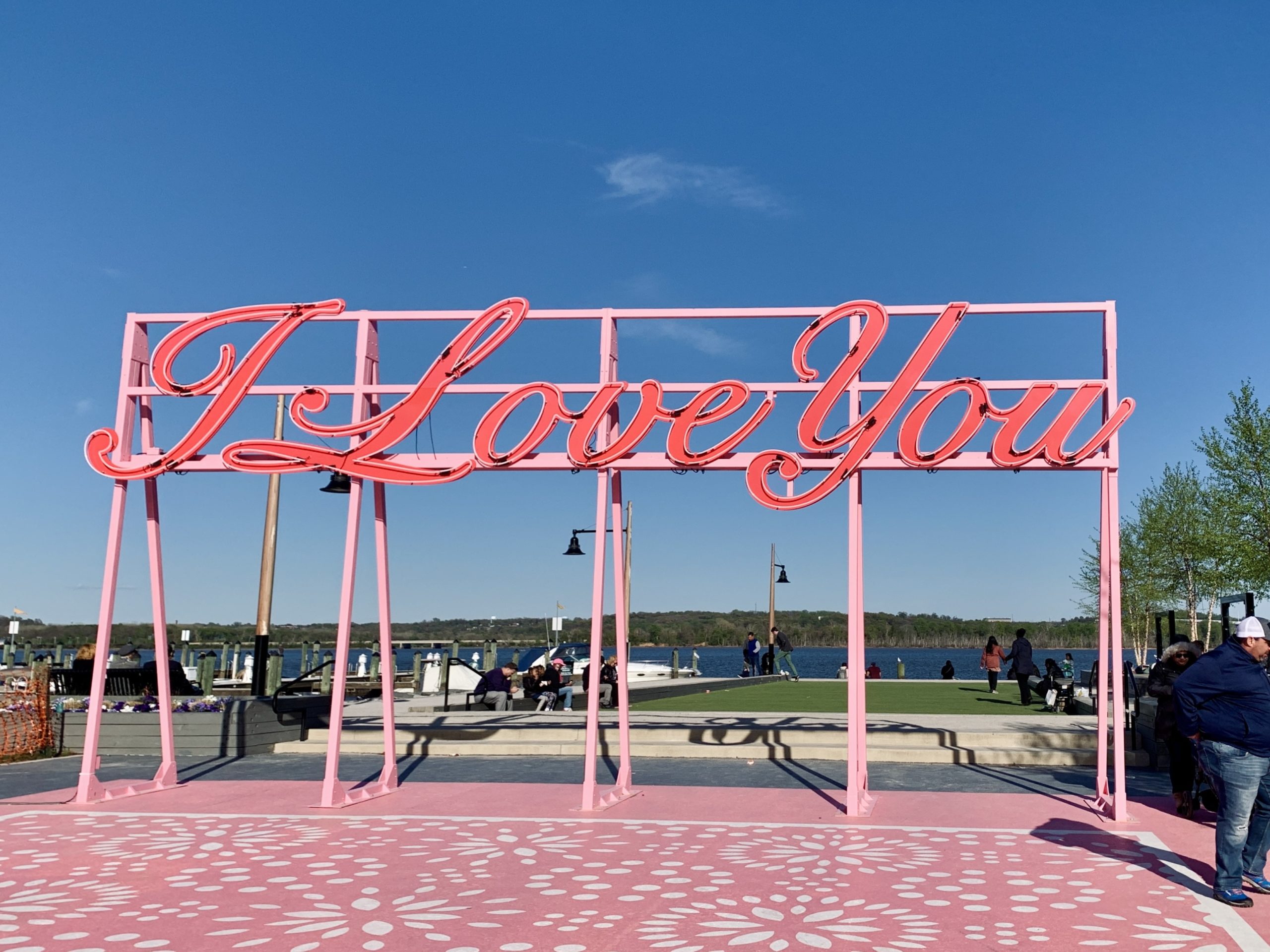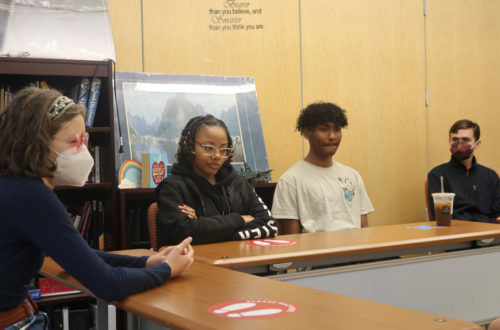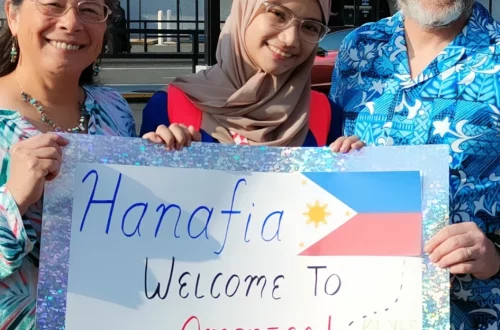Emily Milton
Editor
In 2019, the former ACPS School Board approved Superintendent Dr. Gregory Hutchings to form what is called the High School Project, better known as The Connected High School Network. This program was designed to further integrate students at the Chance For Change, Satellite, Minnie Howard, and King Street campuses of Alexandria City High School as one whole high school in Alexandria. The recent developments of creating a more structured and versatile campus-based high school reflects the concerns of overcrowding in the King Street campus and lack of flexibility to a high school education.
One of the high school campuses that is prominent in the rebranding and reshaping of ACHS is the Satellite campus. Satellite allows students to take two classes at a time in two different day sessions through online education sites either physically at the Satellite campus itself or on their own at home. Sheree Stephens, a Satellite administrator, says some students come to Satellite because they “just need a little bit more one-on-one [support]…a smaller environment…they work… [circumstances concerning] their parents…they have chronic illnesses…anxiety and don’t like the large campus… [or] they’re athletes and want to do things outside of school.”
Principal of Satellite campus, Fredericka Smith, says that the Satellite staff is currently “…working on creating collaborative spaces where students can work…and even though they might not be working on the same assignment or even in the same class, they still have the opportunity to talk and just enjoy themselves and build relationships and just have more of a social piece to being here as well.”
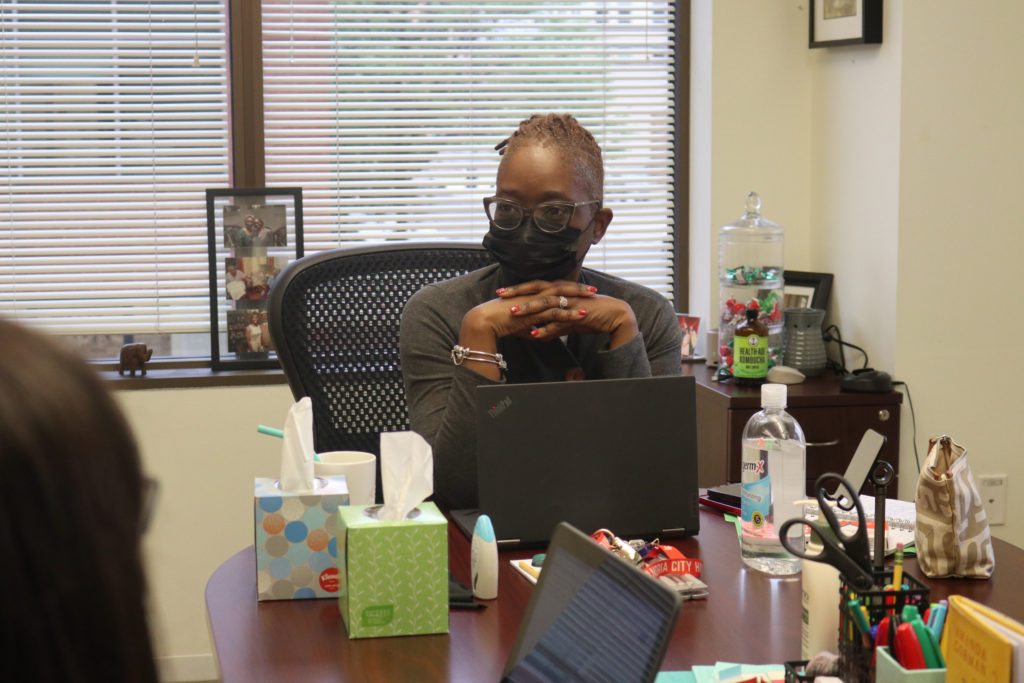
With this more connected environment in mind, there have been many efforts by ACPS staff to figure out ways to include campuses like Satellite so that they feel they are truly a part of ACHS, not as a separate school. First-year Satellite student Duncan McCall explains a transportation system between campuses available to Satellite students: “I’m one of the four or five people who take the bus over to King Street Campus… It gave me the opportunity to take a couple classes at King Street that I might not be comfortable taking here, or aren’t possible to take here.”
Along with transportation between campuses to further the inclusion efforts, King Street campus clubs have been welcoming to students who want to join but may not be at the King Street campus during meetings. Junior Darcy Setliff says, “[Clubs like] Best Buddies and the Marine Conservation Club…also meet outside of school for cleanups or different activities, so it’s not too hard to participate if you just reach out to the teachers who run the cubs. They’re pretty accommodating if you can’t make it to Lunch and Learn.”
History teacher Simon Guggenheim reinforces that efforts have been made by other campuses, but also by Satellite itself. “We have our own SGA [Student Government Association], and that’s something that didn’t exist last year…We’re just kind of getting it rolling again.” He goes on to say Satellite has an SGA representative that travels to King Street to meet with their SGA, “[Liaising with King Street’s SGA] is another thing we’ll expand next year.”
The community atmosphere is vital to the structure of the Satellite campus. Sophia Chapman, a third-year student at Satellite affirms, “Because we are all non-standard, we don’t have an expectation that anybody’s gonna be a particular way… we recognize how different we all are, and we’re all here for different reasons, and we’re accepting [of] one another.”
Kimberly Giles, who teaches all subjects but mostly math and English, reflects on how she feels Satellite is able to connect to ACHS: “[Satellite students] are still a part of King Street Campus because they’re able to participate in the clubs…with sports, and so even though you have to get in a car and drive here, we’re still all a big family and we’re just one big Titan. We’re all Titans, and I appreciate that as well. I love it! I’m a former Titan, and we didn’t have this program back in the day.” She continues by explaining community circles that students participate in, which help students bond with one another to form that “family” atmosphere. Giles says, “They’re able to come together and the mentor-teachers are able to continue to encourage the students to not only get to know one another here but also to get to understand different things that they have available at the King Street Campus.”
Students at the Satellite campus state that although they involve themselves in clubs and other programs at the King Street campus, other Titans still have big misconceptions about what the Satellite campus is and why students go there. Chapman responds, “It used to be a program that was more geared through graduating early. Some people think that it’s just like if you have a 504 plan and need some accommodations, but really…There’s not one reason why people come to Satellite.” Junior, Darcy Setliff, says, “I think people don’t think it [Satellite] exists…or they think that it’s fully virtual, and you don’t come to school…there’s a lot more teacher involvement than I thought.”
Even teachers at the Satellite campus have misconceptions about other ACHS sites. Giles says, “Before I started working here, I actually was only thinking about the King Street campus, and I didn’t realize that we are so broad… I just learned about the CFC [Chance For Change campus] when I started working here.”
Setliff and McCall reflect on the fact that most students at other campuses assume that Satellite is similar to how the 2020-2021 school year was structured. Setliff said, “I think people are confused and think it’s how they learned in 2020 and 2021 [rather] than Edgenuity [online learning program used at Satellite]. People do socialize…you don’t just sit at your computer all day; you can do what you want.” McCall supports Setliff’s statements by saying, “…it’s just the same amount of learning or work, just condensed into smaller packages.
Smith, the principal, insisted, “Yes, there is a huge disconnect [between ACHS campuses] and we are trying very hard to bridge that gap…” She explains that students at Satellite mainly miss out on activities at Minnie Howard and King Street due to the Lunch and Learn schedule: a new, flexible lunch structure for students at Minnie Howard and King Street campuses. “Our students have a different lunchtime… They can’t [participate in clubs or activities] because it’s not available to them during their assigned lunchtime.”
Another big issue with the disconnectedness of the campuses is the lack of communication. Smith recalls, “…A lot of times, emails will get sent out and it goes to King Street [and] Minnie Howard, but it doesn’t come to Satellite… that’s happened a few times. For instance, with prom, [we] ended up having to create a situation where I’m selling the prom tickets to our students, versus having someone come here and sell prom tickets to them.”
Smith says that King Street Principal, Peter Balas, and other administrators have been very supportive of the initiatives to expand and improve Satellite’s awareness to students. For Smith, a key feature to the inclusion of her students is “Making sure we try to keep the lines of communication open and get the information we [Satellite] need so we can pass it on to our students…versus our students having to go to the King Street campus.”
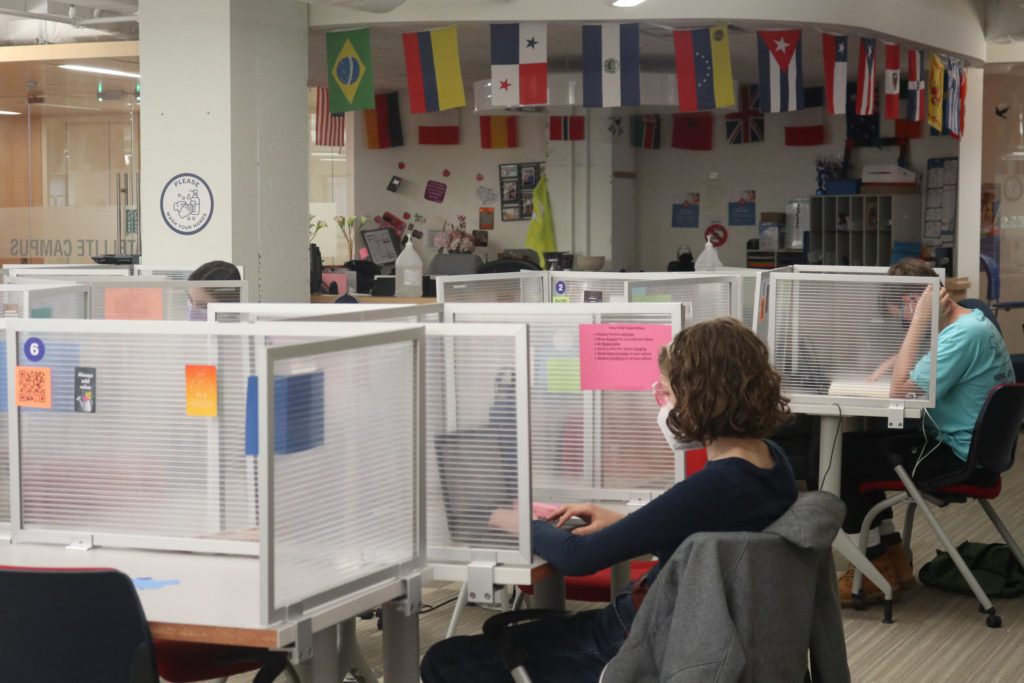
Although there may be underlying feelings of disconnectedness between students at different campuses, moving forward, with ACPS staff assistance, Smith says, “The goal is to get [enrollment] up to between 200 to 400 students over the next few years as [a] part of the High School Project.” Giles concludes by stating that the main reason ACPS has multiple campuses is that, “This [ACHS] is the foundation for where you need to go next. And I think we’re all trying to make sure that you understand that you have to do something… to figure out what your next step is…to help you understand where your gifts are right now. That’s what I think is the most important, because this is not forever.”
Featured image by Hanafia Arsad
This article is part of a three part series about Satellite Campus. To view the other two articles, click below:

